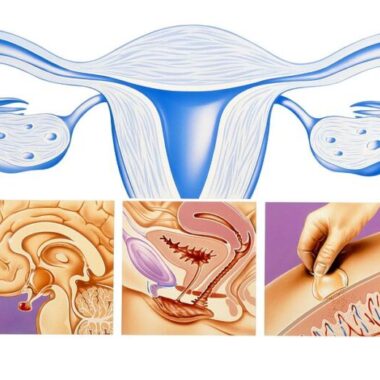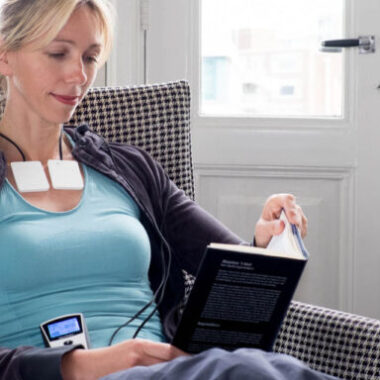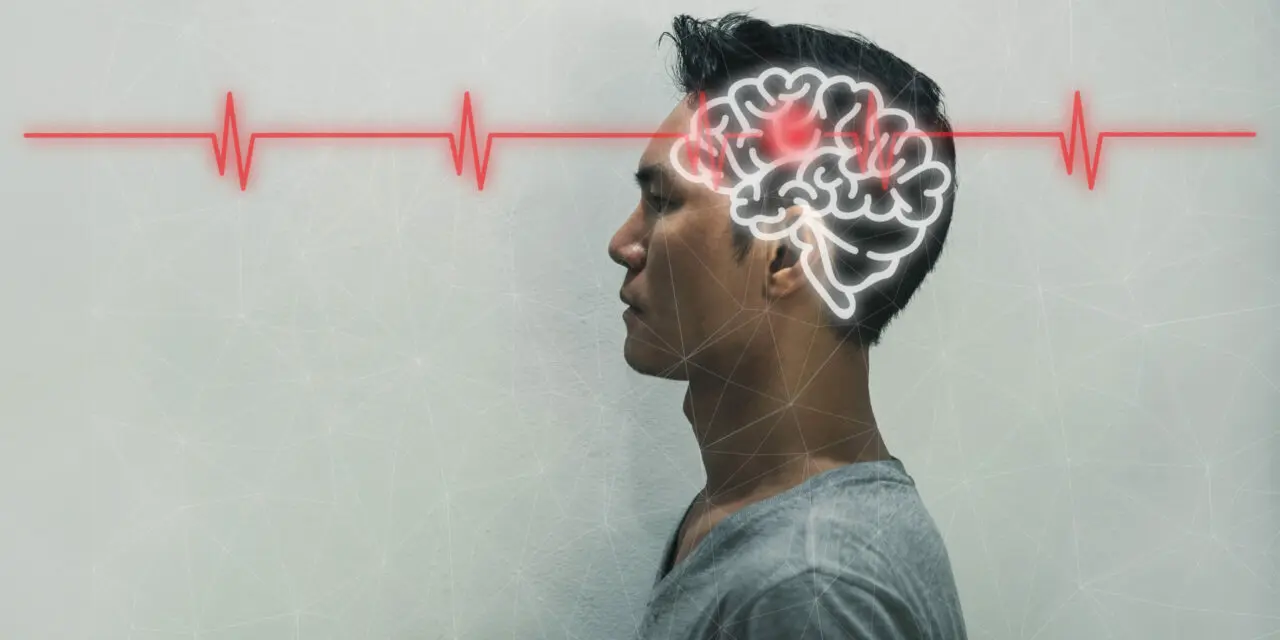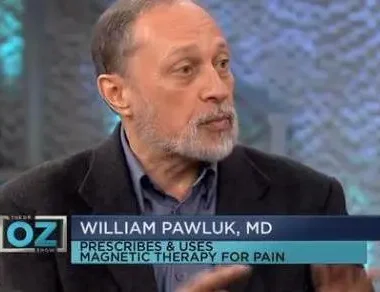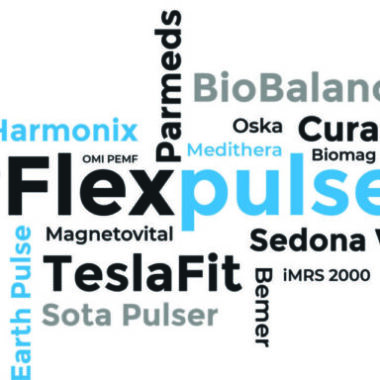PEMF vs TENS – Pulsed Electromagnetic Fields Vs Transcutaneous Electrical Nerve Stimulation, What’s the Difference?
Table of Contents

There’s a lot of confusion around the differences with Pulsed Electromagnetic Field (PEMF) devices. Most often with other electrotherapy and electrical stimulation (e-stim) devices. This is especially true for Transcutaneous Electrical Nerve Stimulation (TENS) machines. Although there are some similarities, there are also some very big differences in PEMF vs. TENS – particularly in the way each is applied and how this impacts the way they interact with the body.
TENS units use electric currents while PEMF devices use pulsed electromagnetic fields. PEMFs have effects on the brain and at the cellular level in your body. They don’t simply stimulating nerve activity. This means that PEMFs offer deeper healing as well as the pain management effects TENS units provide.
The purpose of TENS units are to help patients manage pain. They work by a distraction technique, called the gate control theory. Basically, TENS operates by confusing the brain through the stimulation signals it produces. It competes with the signals from another pain source. So, TENS stimulation is like stomping on your big toe when you have a headache. The pain in the toe now is stronger than the headache pain. Thus, it overshadows the headache. This is usually a very temporary benefit.
PEMFs are designed to stimulate repair of tissues at the cellular level. Repair and healing of the cause of the pain is what produces longer-lasting pain relief. TENS is mostly used for pain. However, it does so mostly without healing the cause of the pain. In addition to giving pain relief, PEMFs have a whole range of other health care applications. Research has shown that PEMFs can stimulate healing for wounds and bone fractures. They can also have a positive impact on depression and anxiety. Furthermore they improve sleep quality, and many more benefits beyond pain relief.
APPLICATION AND THERAPEUTIC MECHANISMS OF PEMF AND TENS
PEMFs work at the mitochondrial level to repair cells and tissues. TENS stimulates nerves and activates the opioid system, changing perception of pain. Therefore, TENS units don’t impact actual healing – they simply manage the pain of the injury.
PEMFs do that, and more! PEMF therapy is also highly effective in the repair of damaged cells. Along with this, it benefits neuron stimulation, calming inflammation, and helping to create new cells. Since a PEMF device can also manage pain, there are a lot of good reasons to choose PEMF therapy over TENS therapy.
Beyond the actual therapeutic benefits PEMFs offer, convenience is another factor that makes them a more appealing option. TENS units must have direct skin contact, making them more difficult to use. PEMFs, however, can be used over light clothing. This allows for use in more settings – such as sitting in your chair in a cubicle, or even while you’re driving.
Because PEMF devices come in a range of unique delivery options – such as a chair pad, total body pad, or smaller rings and paddles, they can target more of the body at once than TENS units can. With a TENS unit, electrodes must be moved from one spot to another on the body, which can take more time and effort to accomplish.
A CLOSER LOOK AT ADDITIONAL PEMF BENEFITS
As I’ve said already, PEMF devices have a wide range of therapeutic benefits, far beyond the pain management function of TENS units. Some of these additional benefits might be surprising, but the reach of PEMF therapy is a lot wider than you might think. Insomnia, cancer management, and weight loss are some of the unique conditions that PEMFs can help, which TENS units cannot.
PEMFS AND INSOMNIA
One result that you might not expect to gain from PEMF therapy has been discovered in the research: PEMF therapy is effective treatment for a range of sleep issues, including insomnia! A double blind study in 2012 found that 90% of participants with insomnia felt relief within just four weeks – and 75% no longer suffered from insomnia at all!
Since sleep is such an important aspect of the healing process, and enhances cellular regeneration, this is a tremendous added benefit. It’s easy, effective and convenient. And not only are sleep disorders resolved, the underlying cause (most often depression) can also be healed – which means the sleep issues may not return later.
PEMFS AND CANCER
Cancer treatments often bring a range of unpleasant side effects and low rates of total remission. New therapeutic strategies are essential, and the use of PEMF therapy in cancer treatment offers many potential benefits.
PEMF therapy is non-invasive, safe, and will not be toxic to non-cancerous cells like so many traditional cancer treatments are. PEMF therapy has been tested in cellular and animal applications, and so far in very limited application in human cancer. Although much more research is necessary, initial findings suggest that PEMF therapy, especially in combination with other treatments, can offer real benefits in the treatment of cancer.
In vitro (outside of living organisms) research has found that PEMFs inhibit growth of cancerous cells and reduce tumor growth, among other findings. In vivo (within a living organism) research supports the claim that, when compared to untreated control groups, all treated groups show slower rate of tumor growth.
Two clinical studies using PEMF therapy for cancer treatment showed that, compared to other cancer treatments, PEMF therapy is a safe and promising alternative.
PEMFS AND WEIGHT LOSS
Weight loss and fat reduction are also areas that can be positively impacted by PEMF therapy. PEMF therapy, through its direct cell stimulation, creates more energy, which in turn boots metabolism.
Release of fatty acids from fat cells and improved circulation are additional ways that PEMF therapy can help with weight loss. With better circulation, stubborn fat deposits can be mobilized and get to the bloodstream, where they can be used as energy for the body.
Weight loss is also greatly impacted by the reward centers in the brain, as well as the bacteria in the gut. PEMF therapy stimulates the reward centers, reducing cravings, and helps change the balance of bacteria to a more beneficial state, thus aiding in weight loss.
SAFETY AND ADDED VALUE
In addition to all those added benefits that PEMF therapy offers as compared to the primary pain management function accomplished by TENS therapy, PEMF devices offer an impeccable record of safety and are a much better investment due to the range of capabilities a unit offers.
Animal research has shown that stimulation above 20 Hz can have negative side effects. TENS units are often set to >50Hz, meaning they can only be used sparingly – 30 to 60 minutes a day, short term only.
PEMFs, on the other hand, are often set below 20 Hz – typically even under 10 Hz. This low frequency treatment can be used for extended periods of time, multiple times per day if desired. Some systems can even be run overnight, promoting healthy sleep and healing without disrupting any part of your day.
Properly applied PEMFs have shown no adverse side effects – unlike many conventional treatments for pain and other conditions. Because PEMFs always pass all the way through the body, there’s no danger of overdose as there is with pain medications.
A TENS unit has very specific applications, which means your investment might sit on a shelf more often that it’s in use. PEMFs, however, can be used to treat so many health problems – and are also very beneficial as preventative care. So when you invest in one, you (and your whole family) can reap multiple benefits This is true even after the condition you initially purchased the unit to treat has been resolved.
IS PEMF THERAPY BETTER THAN TENS?
To reiterate the comparisons between PEMF therapy and TENS therapy, while they are similar in some ways, there are many reasons why PEMF therapy is the right way to go. PEMF devices are more convenient, as they don’t require direct skin contact, like TENS. The coils can be put over clothing, and even under shoes. PEMF devices can be used more often. They’re for a wide range of health concerns that extends well beyond pain management. PEMF devices have a solid reputation for safety, with no adverse side effects.
Get guidance in selecting a PEMF device. Call our office to speak with a member of our team at (866) 455-7688. We can help you find the product that best suits your health needs and budget.
REFERENCES
Pelka R, Jaenicke C, Gruenwald J. Impulse magnetic-field therapy for insomnia: a double-blind, placebo-controlled study. Adv Ther. 2001;18(4):174-180. [PubMed]
Vadalà, M., Morales-Medina, J. C., Vallelunga, A., Palmieri, B., Laurino, C., & Iannitti, T. (). Mechanisms and therapeutic effectiveness of pulsed electromagnetic field therapy in oncology. Cancer medicine, 5(11), 3128–3139. doi:10.1002/cam4.861

